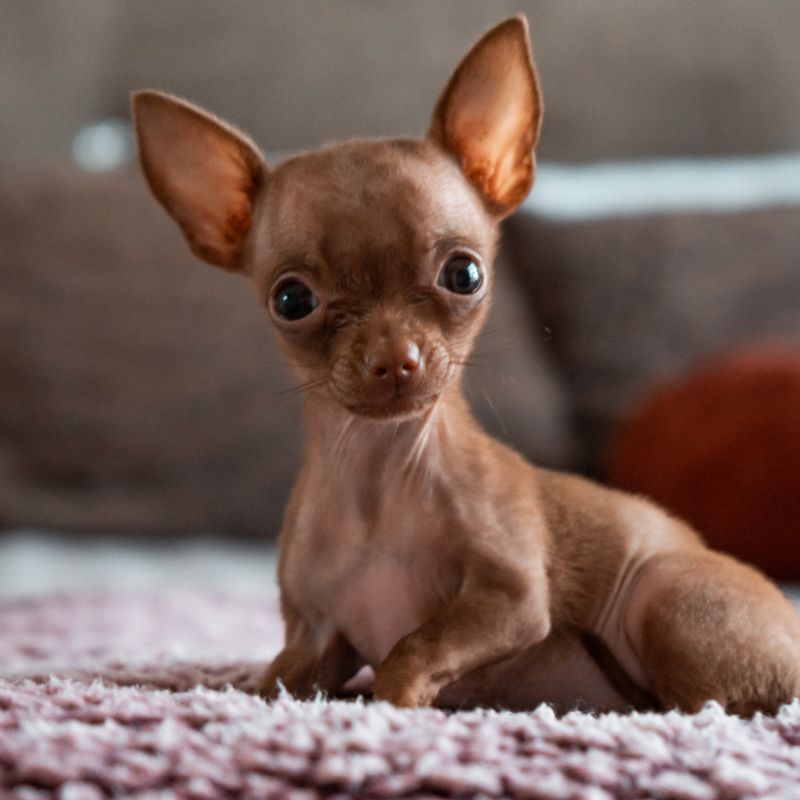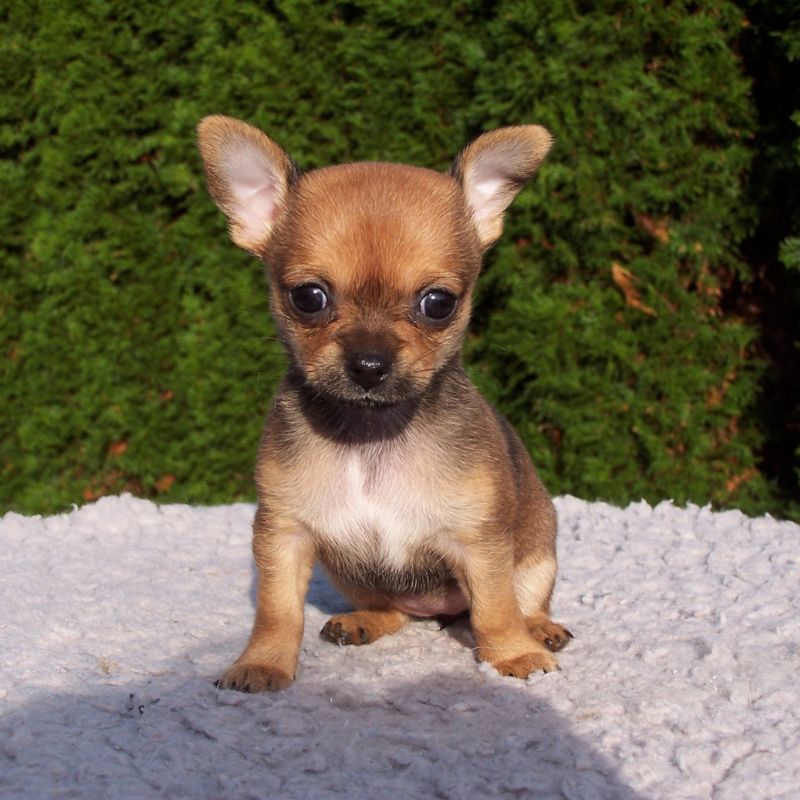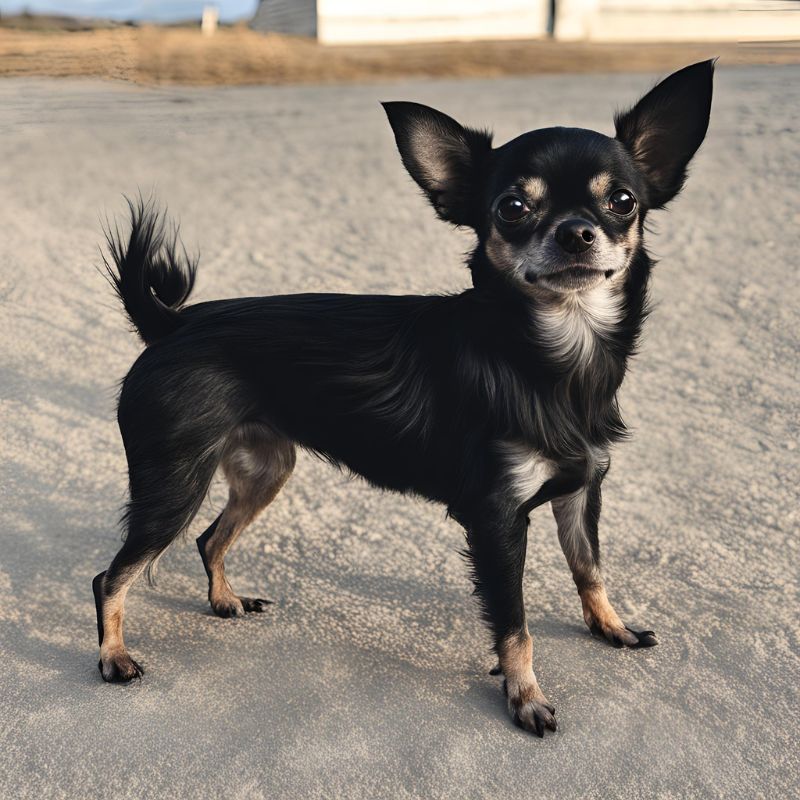If you’re a proud Chihuahua parent, you know these little furballs are full of personality. But when you notice your Chihuahua skin turning black, it’s natural to be concerned. You might ask, “What’s causing this change, and should I be worried?” Don’t panic—darkening skin, also called hyperpigmentation, isn’t always a sign of a severe problem, but it’s definitely worth investigating.
In this blog, we’ll check the potential reasons why your Chihuahua’s skin might be darkening, discuss possible solutions, and give you tips for keeping their coat and skin healthy.

Why Is My Chihuahua’s Skin Turning Dark?
The darkening of your Chihuahua’s skin—also referred to as hyperpigmentation in dogs—isn’t a disease itself but rather a symptom. It happens when your dog’s skin produces excess melanin, the pigment responsible for their skin and coat color. This condition can make patches of their skin look black or darker than usual.
However, Chihuahua skin turning black doesn’t happen out of nowhere. There’s usually an underlying cause that triggers this change, so identifying and addressing it is key. The good news? It’s often manageable with the right care and attention.
What Are the Possible Causes of a Chihuahua Skin Turning Black?
Several factors can lead to Chihuahua skin problems like hyperpigmentation. Some are minor and easy to fix, while others might require a trip to the vet. Here are some common reasons behind your Chihuahua skin turning black:
1. Allergies
Just like humans, Chihuahuas can have allergies. These might stem from food, environmental factors like pollen, or even grooming products. Allergies often cause irritation, redness, and itchiness, leading your Chihuahua to scratch excessively. Over time, this irritation can result in hyperpigmentation as their skin tries to heal itself.
2. Skin Infections
Bacterial or fungal infections are another common culprit. Yeast infections, for instance, can cause your Chihuahua’s skin to darken and thicken, especially in areas like the belly, armpits, or groin. If your Chihuahua is losing hair alongside the black patches, a skin infection might be the root cause.

3. Hormonal Imbalances
Hormonal issues, such as hypothyroidism or Cushing’s disease, can affect your dog’s skin. These conditions often cause Chihuahua alopecia (hair loss) and hyperpigmentation in dogs, along with other symptoms like weight gain, lethargy, or changes in appetite. If you suspect hormones are to blame, it’s time to consult your vet.
4. Friction or Trauma
Areas where your Chihuahua’s skin experiences constant friction—like their armpits, belly, or inner thighs—can develop dark patches over time. This is especially common in overweight dogs or those with skin folds.
5. Parasites
Fleas, ticks, and mites don’t just cause itching—they can also lead to irritation and inflammation. When your dog constantly scratches or bites at the affected area, their skin may turn black as it heals. Mange, a condition caused by mites, is a notorious example of this.
6. Genetics
Some Chihuahuas are simply more prone to skin problems than others. Certain lines might carry a genetic predisposition to Chihuahua alopecia, leading to patches of hair loss and black skin.
7. Aging
As Chihuahuas age, their skin can naturally darken in certain areas. This is generally harmless but worth monitoring to ensure there aren’t other contributing factors.
8. Poor Nutrition
A lack of essential nutrients in your dog’s diet can take a toll on their coat and skin. Deficiencies can lead to dry skin, hair loss, and even black patches as the skin tries to repair itself. Feeding your Chihuahua a high-quality, balanced diet is crucial for their overall health.

Can Black Skin on a Chihuahua Be Healed?
The good news is that Chihuahua skin turning black can often be treated, depending on the underlying cause. The first step? Identifying the root of the problem. Here are some tips to help your furry friend’s skin get back to its healthy, natural state:
1. Visit the Vet
If you notice black skin on your Chihuahua, it’s always best to consult a vet. They can perform tests to determine if allergies, infections, or hormonal imbalances are to blame. Your vet might recommend medications, dietary changes, or special shampoos to address the issue.
2. Treat Infections Promptly
If an infection is the culprit, your vet may prescribe antibiotics, antifungals, or medicated creams to clear it up. Regularly cleaning and monitoring affected areas can also help prevent future infections.
3. Address Allergies
For Chihuahua skin problems caused by allergies, pinpointing the trigger is crucial. You might need to switch to hypoallergenic dog food, use gentler grooming products, or limit their exposure to certain allergens like grass or dust. Medications like antihistamines or steroids might also be recommended to manage symptoms.
4. Improve Their Diet
Good nutrition goes a long way in preventing Chihuahua skin problems. Make sure your pup’s food contains high-quality proteins, omega fatty acids, and essential vitamins to promote healthy skin and coat. Supplements like fish oil can also work wonders.
5. Control Parasites
Regular flea and tick prevention is essential to keep your Chihuahua comfortable and itch-free. If you suspect mites or mange, your vet can recommend specific treatments to eliminate these pesky parasites.
6. Maintain Proper Hygiene
Bathing your Chihuahua with a gentle, dog-specific shampoo can help keep their skin clean and healthy. Avoid over-bathing, as this can strip natural oils and lead to dryness. Focus on regular brushing to remove loose hair and distribute oils across their coat.
7. Weight Management
If friction is causing dark patches on your Chihuahua’s skin, keeping them at a healthy weight can reduce this issue. A fit Chihuahua is less likely to experience excess rubbing in problem areas.
8. Be Patient
Healing black skin on a Chihuahua can take time. Hyperpigmentation often fades gradually as the underlying cause is treated. Keep monitoring their skin and follow your vet’s advice to ensure steady progress. Sometimes, black Chihuahua skin can’t be healed and it permanently stays on your dog’s body.

Preventing Chihuahua Skin Problems
While it’s great to treat Chihuahua skin turning black, prevention is even better. Here are a few habits to keep your pup’s skin and coat in tip-top shape:
- Regular grooming: Brush their coat frequently to avoid matting and improve circulation. Every skin needs to be released of dead skin cells. By regularly grooming your Chi, you help him/her keep the skin elasticity.
- Routine vet check-ups: Annual or biannual visits can catch potential issues early.
- Parasite control: Stay on top of flea, tick, and mite prevention to avoid irritation. Make sure you put an anti-flea and anti–tick collar around your dog’s neck regularly.
- Balanced diet: Provide high-quality food with all the nutrients they need. Chihuahuas have sensitive bellies and they should not eat food that is rich in carbohydrates and artificial flavors and colors.
- Clean environment: Keep their bedding, toys, and living space clean to reduce allergens and bacteria.
READ ALSO: Chihuahua Bad Breath: Causes, Health Issues, and Remedies
Chihuahua Raw Diet: Is It A Good Choice?
Chihuahua Skin Turning Black: Final Thoughts
When you notice your Chihuahua’s skin turning black, it’s easy to feel overwhelmed. But remember, this change is usually a sign of something manageable—whether it’s allergies, infections, or even just friction. By identifying the cause and taking the right steps, you can help your furry friend feel comfortable and confident again.
As always, if you’re unsure about what’s causing your Chihuahua’s skin problems, don’t hesitate to reach out to your vet. With a little care and attention, your furry friend can enjoy healthy, happy skin for years to come.


One thought on “Chihuahua Skin Turning Black: Reasons and Treatment”